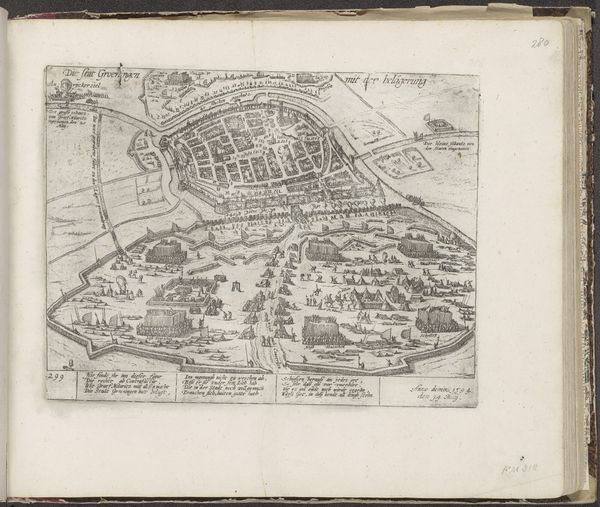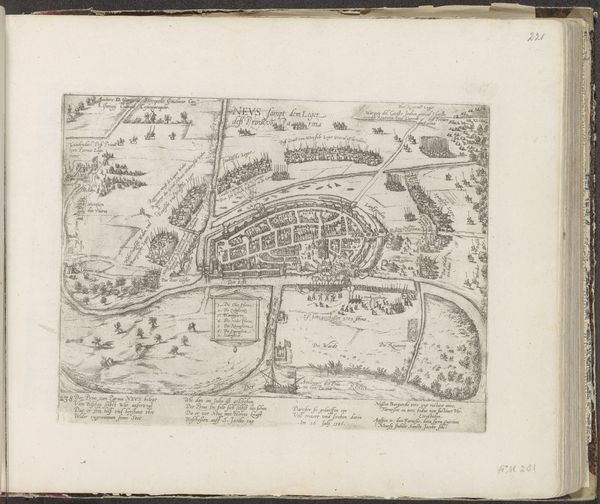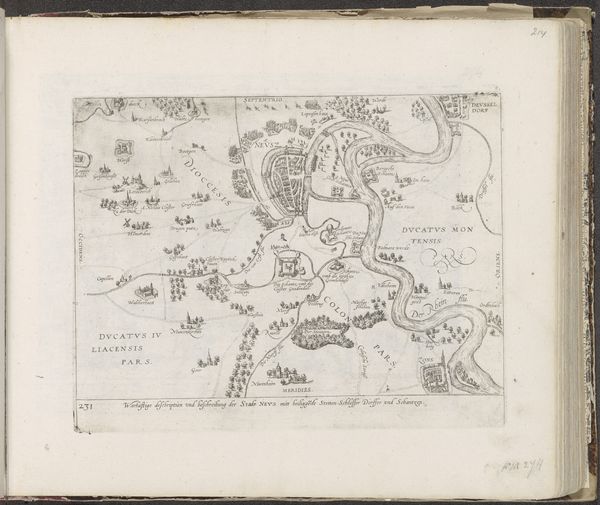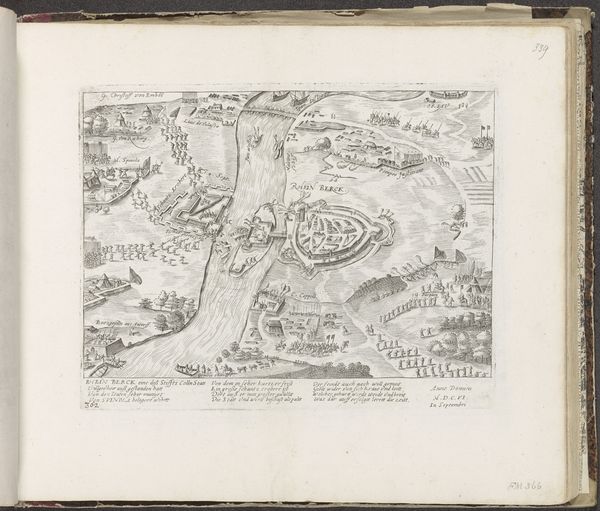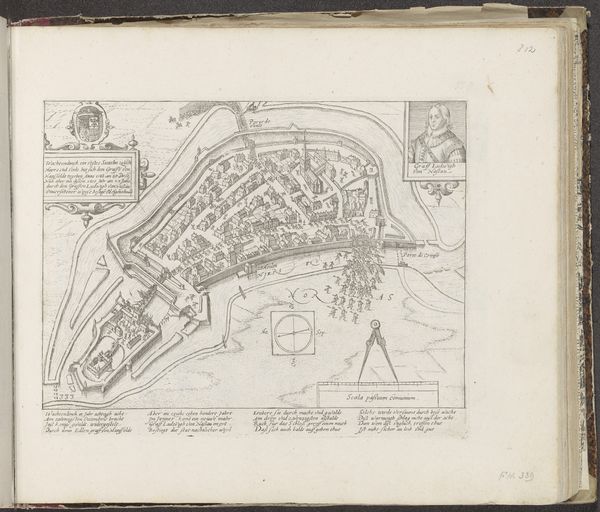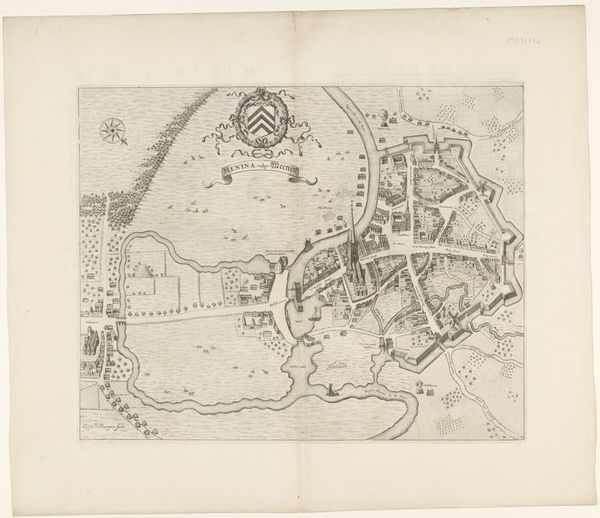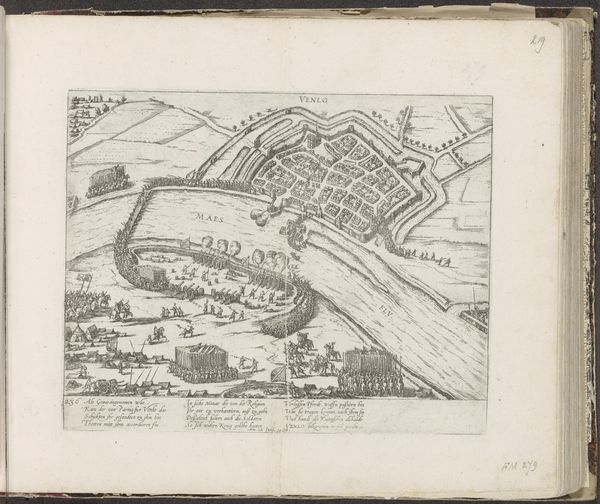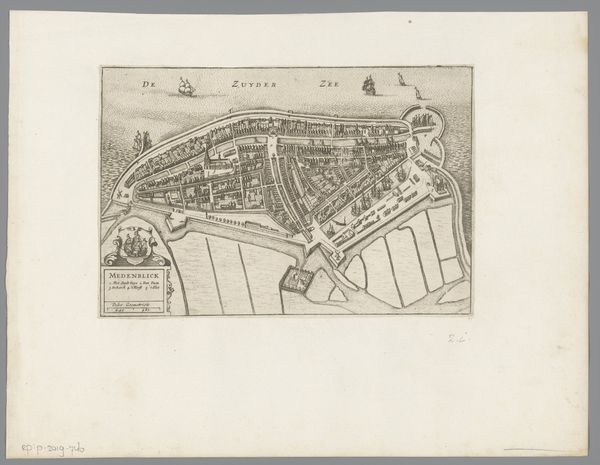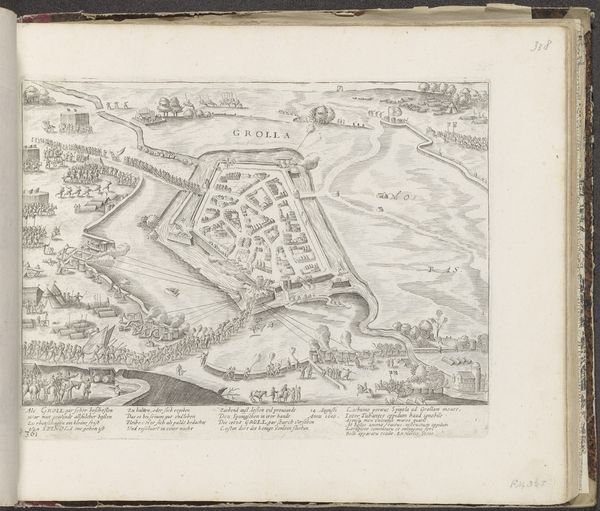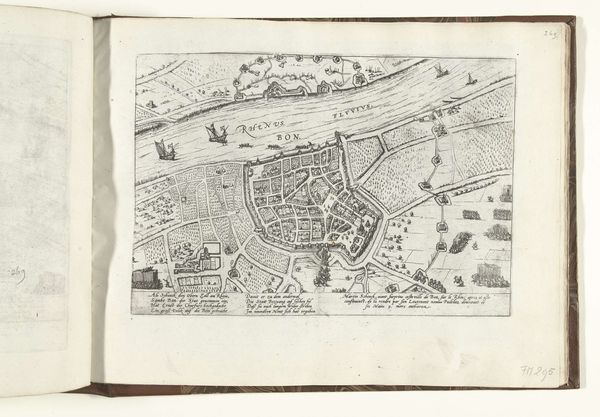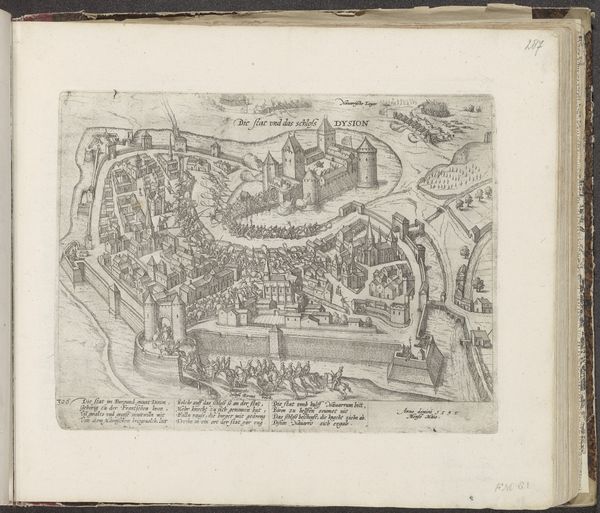
drawing, print, engraving
#
drawing
#
toned paper
#
dutch-golden-age
# print
#
sketch book
#
personal sketchbook
#
sketchwork
#
ink drawing experimentation
#
pen-ink sketch
#
pen work
#
sketchbook drawing
#
cityscape
#
storyboard and sketchbook work
#
sketchbook art
#
engraving
Dimensions: height 196 mm, width 286 mm
Copyright: Rijks Museum: Open Domain
Curator: This intriguing work, currently held in the Rijksmuseum, is entitled "Ontzet van Bonn na een beleg van 9 maanden, 1588," or "Relief of Bonn after a siege of 9 months, 1588." It’s attributed to Frans Hogenberg and dates from around 1588-1591. The piece seems to be an engraving, perhaps a drawing, worked on toned paper. Editor: My immediate sense is one of constraint and order. It's like a bird's-eye view forcing this sprawling cityscape into neat little boxes and rigid lines, all hemmed in by the river. Curator: That’s a great point. As an iconographer, I'm fascinated by how maps themselves become symbols of power and control. Look at how the Rhine, marked as “Rifenus FLVVIUS," literally frames Bonn. Water here isn’t just a geographic feature, but also a defining characteristic that shapes not only Bonn’s identity but also its destiny. And the presence of ships introduces elements of commerce and perhaps military strength. Editor: Exactly! And those fortifications—they're not just functional; they’re a statement. Sieges, like the one depicted, were brutal power plays in the 16th century. Images like this served as political tools, visually legitimizing authority by showing military victories in city views. Curator: Note how precise Hogenberg is in his linework. Each little building and street contributes to a collective image that embodies the town’s spirit or, at the very least, the perception the artist sought to portray. The uniformity in the hatching indicates some underlying collective spirit. Editor: That’s a clever insight. Beyond that spirit, I think that the accuracy also shows an element of emerging science. The engraver's attention to architectural details speaks volumes about contemporary interest in geographical exactitude, a concept increasingly important in urban administration and military campaign strategies. So it’s as much a functional document as it is art. Curator: Perhaps one meant to inspire hope or at least project invincibility, by emphasizing the details in pen and ink—visual symbols created with intentionality in mind to underscore specific ideologies during turbulent times. Editor: The act of visually claiming the territory in ink shows an assertion of cultural and political dominance and even reflects social dynamics around mapping as a power game. Fascinating how something seemingly straightforward can be layered with all this. Curator: Yes, images such as these encode our ongoing cultural and historical narratives. I now consider the artwork within a broader network of related symbolism and artistic heritage. Editor: And I am reminded that public appreciation of this work emphasizes art's significant public role as evidence and representation of our shared history.
Comments
No comments
Be the first to comment and join the conversation on the ultimate creative platform.
